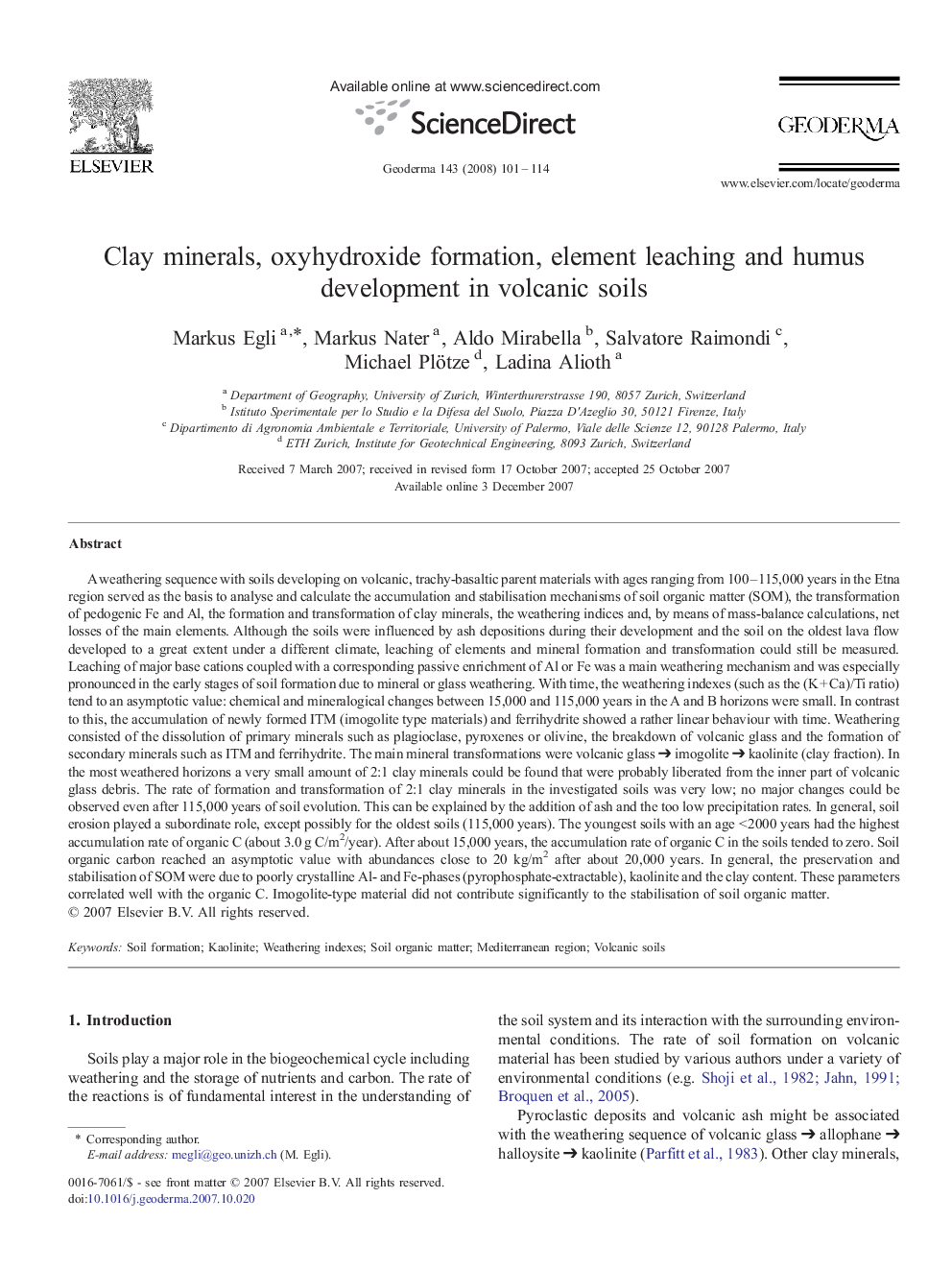| کد مقاله | کد نشریه | سال انتشار | مقاله انگلیسی | نسخه تمام متن |
|---|---|---|---|---|
| 4574831 | 1629547 | 2008 | 14 صفحه PDF | دانلود رایگان |

A weathering sequence with soils developing on volcanic, trachy-basaltic parent materials with ages ranging from 100–115,000 years in the Etna region served as the basis to analyse and calculate the accumulation and stabilisation mechanisms of soil organic matter (SOM), the transformation of pedogenic Fe and Al, the formation and transformation of clay minerals, the weathering indices and, by means of mass-balance calculations, net losses of the main elements. Although the soils were influenced by ash depositions during their development and the soil on the oldest lava flow developed to a great extent under a different climate, leaching of elements and mineral formation and transformation could still be measured. Leaching of major base cations coupled with a corresponding passive enrichment of Al or Fe was a main weathering mechanism and was especially pronounced in the early stages of soil formation due to mineral or glass weathering. With time, the weathering indexes (such as the (K + Ca)/Ti ratio) tend to an asymptotic value: chemical and mineralogical changes between 15,000 and 115,000 years in the A and B horizons were small. In contrast to this, the accumulation of newly formed ITM (imogolite type materials) and ferrihydrite showed a rather linear behaviour with time. Weathering consisted of the dissolution of primary minerals such as plagioclase, pyroxenes or olivine, the breakdown of volcanic glass and the formation of secondary minerals such as ITM and ferrihydrite. The main mineral transformations were volcanic glass ➔ imogolite ➔ kaolinite (clay fraction). In the most weathered horizons a very small amount of 2:1 clay minerals could be found that were probably liberated from the inner part of volcanic glass debris. The rate of formation and transformation of 2:1 clay minerals in the investigated soils was very low; no major changes could be observed even after 115,000 years of soil evolution. This can be explained by the addition of ash and the too low precipitation rates. In general, soil erosion played a subordinate role, except possibly for the oldest soils (115,000 years). The youngest soils with an age < 2000 years had the highest accumulation rate of organic C (about 3.0 g C/m2/year). After about 15,000 years, the accumulation rate of organic C in the soils tended to zero. Soil organic carbon reached an asymptotic value with abundances close to 20 kg/m2 after about 20,000 years. In general, the preservation and stabilisation of SOM were due to poorly crystalline Al- and Fe-phases (pyrophosphate-extractable), kaolinite and the clay content. These parameters correlated well with the organic C. Imogolite-type material did not contribute significantly to the stabilisation of soil organic matter.
Journal: Geoderma - Volume 143, Issues 1–2, 15 January 2008, Pages 101–114